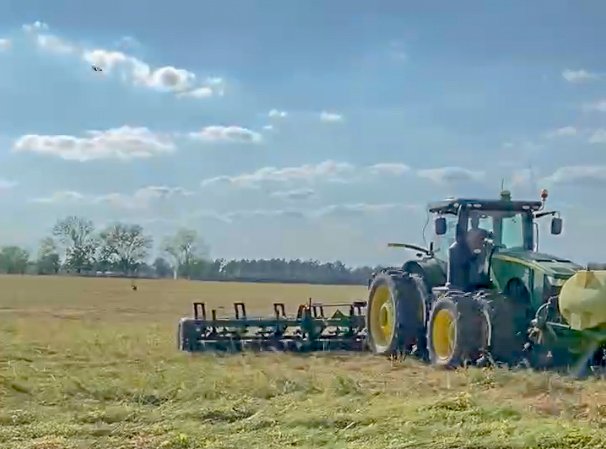Newton Farm Starts No-Till Farming
After graduating from college, I was teaching and coaching at a small rural school not far from the farm I grew up on. The entire time I was employed in education I also was farming a small farm on the side. Did you know teachers do not make a whole lot of money? In 1976 I returned full time to the farm in partnership with my father. Looking back, this experience in education taught me invaluable lessons and molded and prepared me for a journey that has not and will not end on this side of Jordon.
Trying something new has always been something that made my heart beat a little faster. If curiosity killed the cat, I would have been dead long ago. Growing up on a conventionally tilled farm and the cookie cutter practices thereof, it was obvious that looking for a better and more efficient way was not part of the conventional farming way.
Everyone in the farming community had basically the same practices. Disc, disc, disc then bed up the rows, then shape the beds, and then it was time to plant. If the prayers were answered there would be sufficient moisture to germinate the seed that were planted, but not enough to cause the dirt to crust over which would inhibit and sometimes prevent seedling emergence. If the seed germinated and emerged and we did miss the replant bullet, then it was plow, plow, plow, and then plow some more. If we got a few showers during the growing season and the hurricanes stayed out to sea, there would be a harvest. Guess what came next??? Yep, disc, disc, disc and here we go again!
All progress depends on apparently lazy people, people that question the status quo and find a better and “easier” way. Industrious people put the nose to the grindstone and let it rip. I remember my Daddy would not entertain an idea that could be easier and still accomplish the task at hand. In Mr. Angus’ world if you were not sweating, you were not working. I never minded sweating, but sweating just for the fun of it, no thank you.
In the early 1990s we started hearing about no-till from the popular farm publications. In our area this agricultural practice was met with extreme skepticism, which is a good thing. All ideas need to be severely questioned for validity. My father, as conservative as he was, found this idea of planting interesting, but in his opinion not practical for our farm. I recall him saying one day “What kind of farmer would plant where he cannot see the dirt?” In 1991 my father passed away and I inherited total responsibility for the farm.
New ideas are great, but without testing for truth and practical application ideas are useless and even sometimes dangerous. I had to ask, is no-till an idea that can be tested? We can try it to see if its effects truly happen. We can discover if it is practical. So yes, we can test a new way of planting. But where could I start this process?
In 1993 we had the opportunity to test if the idea of no-till could actually be used on our farm. A close friend and I travelled to Milan, Tennessee to participate in a two-day seminar on no-till. We saw fields that had been in continuous no-till for 14 years. We saw the equipment used to plant in a no-till manner.
One of the most thought-provoking things we witnessed at the seminar was the side-by-side display of a conventional field and a no-till field. There was a picture taken after a rain event where the runoff of water was collected with pretty dang startling results. They had a glass of water collected from the runoff from each field. The one from the conventional field was muddy and I do not think you would want to take a sip of it, but the water collected from the notil field was clear and you’d probably feel safe to take a swig.
By the morning of the second day the no-till seed had sprouted in my mind and was growing in my heart. I committed to give this idea a try. Soon after we returned from Milan it was time to start planting cotton for the year. I had a five-acre field that we did not disc in anticipation of this being our no-till test field. When I got there, the guys working for me pointed out that somehow this field was missed when the discing took place. You should have seen the eyes rolling and jaws dropping when I shared that we were going to drop into this field with the planter and plant just as was. I asked, no demanded, they not tell my Momma. Virginia Newton did not believe in sparing the rod and the fact that I was 43 years old would have no bearing on her reaction to this foolishness.
We did not adjust the planter at all. We just fell in there and started planting. I walked that field every day praying for success and one day about a week after planting, the cotton was beginning to emerge. I had my first field of no-till growing and discovered an advantage conservation tillage had over conventional, that being no-till saves valuable time.

